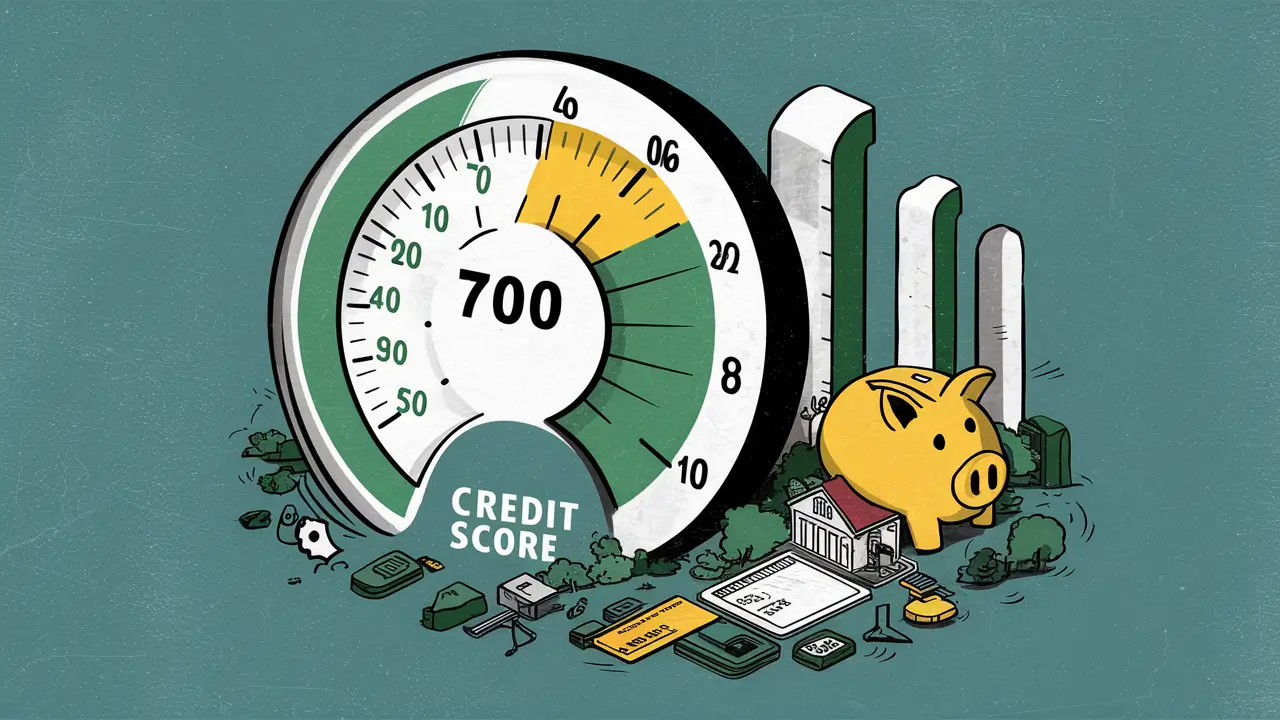
Credit Score How Often They Occur
A credit score is a digit number that ranges from 300 to 850, and through which the lenders evaluate your ability to pay back the credit on time. The individual scores usually lie between 300 and 850, while higher figures mean that the credit risk for the lenders is comparatively lower. A credit score of 700 and above is deemed to be a very good or excellent credit score. But what proportion of consumers truly manages to hit this benchmark score?
The Bantam Credit Score Range
As of 2022, the credit rating of the United States is 716, according to independent consumer credit reporting company Experian, which gathers credit ratings. Out of the customers, almost half have scores greater than 716 while others have scores less than 716. Though not very rare, getting a score of 700 is relatively simple and well above the norm, as was evident.
But, you know, the most common range is from 670 up to 739, which defines around 37 percent of credit score-bearing consumers. About thirty percent of the population has a credit score between 630 and 689, which is deemed "good." Having scores between 740 and 799, another 14% of the population has "very good" credit. Twenty percent of customers rank as "poor," with scores below 630; only 21 percent have a credit score of 800 or greater, assessed as "exceptional."
That is what percentage of people are getting 700-plus scores
As of the second quarter of 2022, data from Experian revealed the different credit scores of consumers and showed that 61% of the consumers with credit scores had credit scores of 700 and above. This gives it a value of over 130 million American adults with prime or super-prime credit.
The percentage of U. S. adults aged 18 and over who have credit scores of 700 or higher has also steadily increased over the past decade: The percentage of U. S. adults aged 18 and over who have credit scores of 700 or higher has also steadily increased over the past decade:
- 2012: 51%
- 2015: 54%
- 2018: 58%
- 2021: 61%
So whereas 700 can be recognized as a good credit score, more than 60% of the scored adults now qualify for it or better. It has increased over time due to societal changes, especially when consumers are knowledgeable about personal finance and credit repair.
Differences Across Age Groups
The age factor does have a major influence on credit scores with people in different age brackets reportedly having different credit scores. Cross-referencing with data from Experian of the year 2021:
- It also suggests that of respondents aged between 18 and 24 years, 16 percent had scores of 700 and above.
- 52% of the respondents with ages between 25-34 had 700 and above scores.
- The following statistics were collected regarding the number of items with over 700 views:
- Ages 45 to 54 years: 69% of respondents scored over 700+.
- Adults between the ages of 55-64: 75 percent achieved a score of 700 and above.
Ages 65+: 61 percent of the participants obtained a test takers’ score of 700 and above.
However, the mentioned percentages are pertinent to the consumers with credit scores, who fall into each of the mentioned age categories. A majority of the U. S adults initiate credit formation before the age of 25, some young adults have no or little credit information for their FICO scores.
New generations are struggling to achieve a prime credit score during their first years of independent living compared to past generations. The programs and knowledge on how to manage credit and pay bills affect credit scores among people. But scores generally grow as consumers age, and thus gain more experience in the use and management of lines of credit.
Geography and Income Differences
Your geographic location and income level can also correlate with significant differences in average credit scores: Your geographic location and income level can also correlate with significant differences in average credit scores:
States with the highest average scores (720+) as of 2022 include: Minnesota, Vermont, New Hampshire, Washington, and Massachusetts are some of the states that are most associated with the act. States with average scores below 675 include Louisiana, Mississippi, Nevada, Georgia, and Alaska.
Consumers with annual household income above 150000$ have average scores slightly below 782. However, those individuals whose income is less than $25000 have much smaller averages of nearly 640. Higher earnings and improved income lead to the ability of people to make timely payments and maintain low credit utilization.
The New Path of Primed Credit
A credit score of 700 is still considered good but it is not in the range of the unique few as it used to be. The average score, it will be noted, has climbed by more than 10 points in the past decade. Currently, about 61% of scored adults meet or exceed that level as consumers become more credit-wise and more lenders start adopting the risk-based pricing system that offers a reward to creditworthy consumers.
What educational resources and time have given the American population is more people now have prime or super-prime credit scores. Whereas a 700 + score is used to specify the ‘700 Club’ that was made up of careful borrowers who knew how to handle credit, today it is easily achievable by a majority of responsible borrowers who understand the credit management process that takes place over an extended period.
Call now for expert credit repair services: (888) 803-7889
Read More:
What credit score do you need for a $300000 mortgage?
Is it a good idea to buy a house with no money down?
Is it true after 7 years a credit report is clear?
What drops credit score the most?
How far off is the Credit Karma score?




